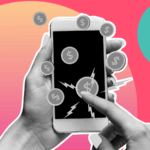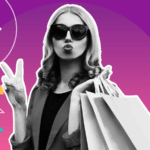By Firas Mghames – Managing Director at FEER McQUEEN & Group CEO at Flag M Group
It’s 2022. We all know the power of digital marketing. But have you ever stopped to think about the impact this digital marketing age has had on our lives? Things that were once seen as ‘niche’ or even ‘kitsch’ are now woven into our daily digital content consumption, creating marketing content that is being eaten up and pushing trends along with the brands that have figured out how to harness this power.
The Pop in Pop Culture
Referencing pop culture in marketing is not new. It has been done for decades, using allusions to reference trends and pull the audience in. Moreover, pop culture can be anything from popular TV shows to songs topping the charts, or even lines from a movie. In other words, pop culture is how Jim & Pam from The Office have become “relationship goals”, and how lines like “Winter is coming” or “Pivot!” are daily staples in conversation. In today’s world that is so digitally advanced, connected 24/7, unexpected things can become icons of pop culture. What will take over the world next? To stay culturally relevant, brands need to constantly seek out, and even actively create, these pop culture references that spark hype and resonate with the brand and its audience.
Making the Most of Pop Culture in Advertising
Harnessing current trends isn’t enough to make it big. What’s also important is making sure the trend lines up with the brand and its goals. The first step is to identify the brand’s values and make sure the values of whatever pop culture reference chosen aligns with them. Customers will easily see through the cracks and call a brand out on it if these values don’t seem congruent, because in the end, a brand’s customer base knows them flawlessly, so when a brand plays a role that isn’t real, it will stick out like a sore thumb. Second, making sure the pop culture reference is totally clear to whoever is writing the ad is essential in order to avoid any misuse of a trend. Imagine taking on the greatest, latest trend only to have misreferenced it or used it out of context, so much so that it completely flies over the audience’s head – embarrassing to say the least. Third, and maybe most important, staying in tune with public opinion and current affairs will help keep the brand relatable while also making sure nothing tone-deaf is propagated. Throwback to the Pepsi ad starring Kendal Jenner – that was a flop and was actually pulled after both Pepsi and Jenner were accused of undermining the BLM movement. Ouch!
Pop Culture & Virality
“Going viral” is a buzzword that has been thrown around for several years now. A piece of content that has gone viral is something that has been widely shared through social media and the Web, creating a certain hype, weaving its way into pop culture, and vice versa. This is where the magic lies! How can brands use virality and pop culture to their benefit? It’s all about harnessing the status quo’s excitement around certain trends and utilizing it in a clever and authentic way to
push a product or brand, of course making sure it resonates with the brand’s audience and bottom line. For example, Domino’s Pizza recently launched their campaign promoting their new face recognition and eye-tracking technology by jumping on board the Stranger Things bandwagon, pushing the idea that customers can now order pizza “with their minds.” How cool! With a slew of videos, memes, and even a giveaway, this Domino’s Pizza / Stranger Things mashup has audiences mind boggled and drooling at the same time.
The TikTok Phenomenon
The influence of TikTok on pop culture is the hot topic in question. The app that has been downloaded more than 987 million times since 2020 has demonstrated the power it could have over the music industry, fashion industry, and F&B industry, to name a few. TikTok has become a place where everyone belongs, from individuals to brands, and on to businesses, offering a vibrant, buzzing atmosphere that celebrates trends and embraces diversity. We can even say that TikTok has become a culture in and of itself, transcending boundaries as a creative and diverse hub of content. With its huge global reach, TikTok provides a brand new set of tools for marketers to expand on in the realm of digital content, allowing both brands and consumers to use it freely. A stark difference in the way audiences view content on TikTok versus other social media platforms is its algorithm. On TikTok, users view content based on their interests and the things they engage with, as opposed to only viewing content by profiles they’ve followed (aside from ads, of course). This is a whole new ballgame for brands seeking out new audiences and wishing to open up to more viewers. Speaking of ads, not only is the traditional form of ads available for brands to use, but embedded, user-oriented marketing is also making it big within trending dances, jokes, memes, pranks, hacks and storytelling. Ryanair is a perfect example of this, superimposing funny faces onto their planes creating humorous, sharable content that serves as promotional material too – a double whammy. Add to that the unique and original content coming from users around the world, which play into the concoction of trends, like choreography that anyone from general users to celebrities and brands mimic and post. It really is a phenomenon.
The Bottom Line
All in all, marketing to the masses is not an easy ordeal. There’s always a fine line between the audience a brand already has and banks on, and the recruitment of new audiences. With TikTok, recruiting new brand followers seems a (slightly) easier feat – if and only if the brand is able to tackle pop culture trends, in line with brand values, and utilize them positively for advertising. So, is there a magic potion or simple solution? Definitely not. Let’s call it what it is and say it takes a brave advertising team with knowledge of current trends, world affairs, algorithms, and a little daring attitude to make it or break it in the current digital world.







